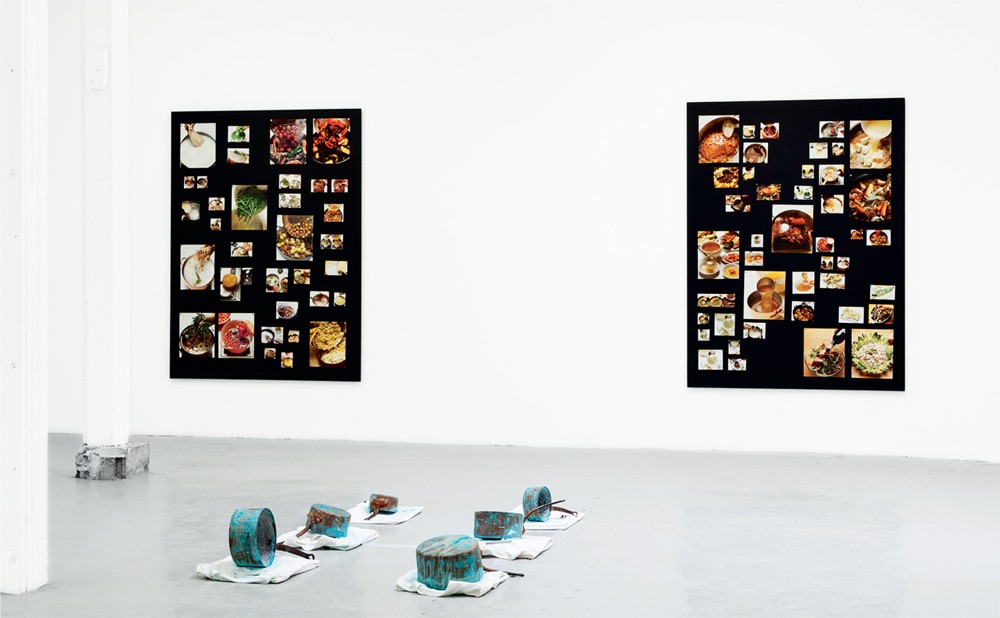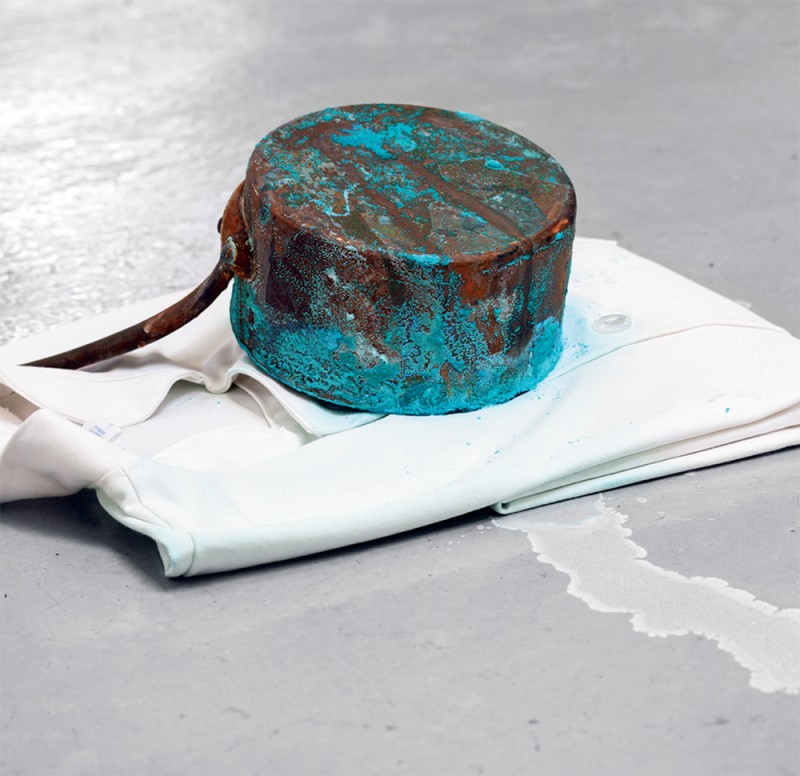Cooking Knowledge
Jorge Luis Borges’s short story “The Library of Babel,” Aby Warburg’s Atlas Mnemosyne project, British cookery writer Elizabeth David’s A Book of Mediterranean Food and the series of 28 instructional cookbooks published by Time-Life in the early ’80s called “The Good Cook” have two things in common. First, they turn up in Toronto-based Aryen Hoekstra’s most recent exhibition at Georgia Scherman Projects, and, second, each and every one of them is an epistemological frame. They are containers of knowledge, which in Hoekstra’s world means they are open to inquiry. One of his ongoing concerns is how the imagination makes connections and how those connections are made manifest; in “Aryen Hoekstra: Good Cook” all those connections are up for scrutiny.

Installation view, “Aryen Hoekstra: Good Cook,” 2018, Georgia Scherman Projects, Toronto. Photo: Yuula Benevolski. Images courtesy the artist.
His process moved from the Warburg Institute to Borges’s infinite story, opening with “the universe— which some people call the library”—and from there to chemistry and cookbooks. The exhibition itself is comprised of six panels filled with images from the dismantled Time-Life series that Hoekstra read as a child: “I looked at them quite regularly but they were this weird reference that never got actively used.” In “Good Cook” the images are organized as a series of gestures that involve the presentation of a meal: starting with mixing, then a pouring motion, finishing, slicing and finally serving. The idea of the gesture as a connecting device is a lift from Warburg, while the framed contents page is taken from David’s famous cookbook about Mediterranean food. On the gallery floor, in front of the panels, are six copper cooking pots, four of which sit on neatly folded chef’s jackets and two on aprons. The pots have been treated with a combination of salt and vinegar and the resulting blue/ green patina is both messy and beautiful.
This idea of “messy experimentation” is at the centre of Hoekstra’s exhibition. Throughout “Good Cook” the idea of possible experimentation is a counter to assumed knowledge and every detail sits in some relation to those propositions; the food images are simply pinned to the black library buckram; they have no glass in front. “The idea is that they are there right now,” Hoekstra says, “but they might be removed at any time.” The Table of Contents is a foil to that contingency; it is framed and glassed and represents a finalized method of organization. Hoekstra’s sympathy resides with the contingent, so the content in his exhibition is constantly being “untethered” from the systems of display and authority within which they appear to be operating. “‘Untethering’ is what the exhibition is aiming at as a whole,” Hoekstra says. “I’m thinking of things that seem foundational but that might better be challenged, or better served, when they float off and mix free.”

Aryen Hoekstra, History of Chemistry, 2018, salt and vinegar patina on copper pots, chef’s jacket. Photo: Yuula Benevolski.
The place of most freedom, as it turns out, is the kitchen. The culinary becomes an especially productive methodology for new thoughts because it is where mixing and blending occur most frequently. It is the place where a good taster is more useful than an inflexible recipe. “The recipe gets better when it starts to spin out from what are the original instructions or prescriptions,” says Hoekstra.
The good cook’s way is also the way of the good scientist and the artist. “Good science is constantly testing things that are held to be true in the hope that there will be a paradigmatic shift,” Hoekstra says. When it gets cooking, that’s also the way the imagination works. Hoekstra’s incursion into the aesthetic kitchen is a recipe for a particularly tasty serving of epistemological doubt. ❚

